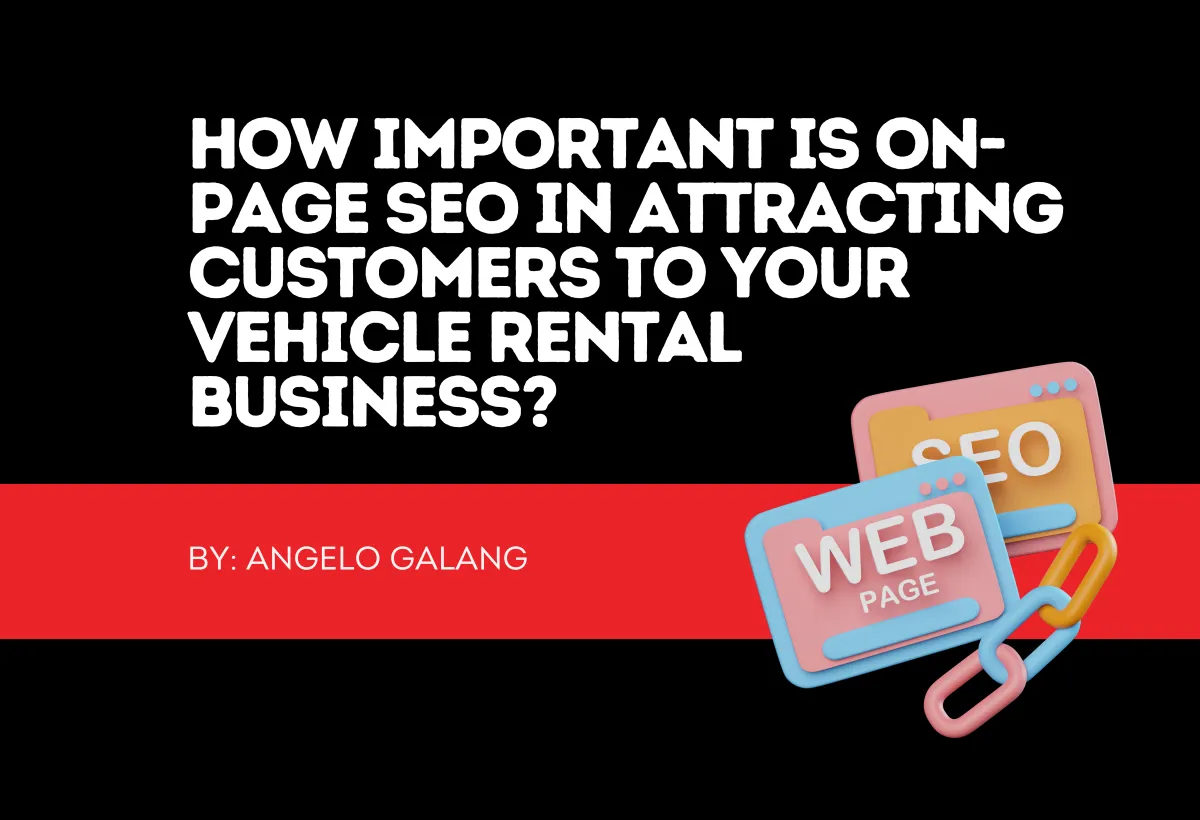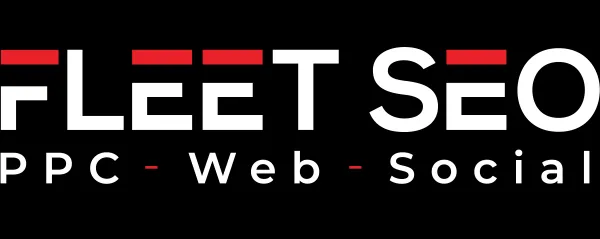
How Important Is On-Page SEO in Attracting Customers to Your Vehicle Rental Business?
Effective vehicle rental marketing depends heavily on your visibility in search engine results. For vehicle rental companies—especially independent or regionally based operators—mastering on-page SEO can mean the difference between a fully booked fleet and vehicles that sit unused. On-page SEO doesn’t just help you rank higher; it creates a streamlined user experience that builds trust and drives action. In today’s competitive market, where users often book rentals directly from their mobile devices, your website must be search-optimized and easy to navigate.
This article explores the key elements of on-page SEO and how each one helps vehicle rental businesses attract more customers, improve online visibility, and increase bookings.
Why On-Page SEO Deserves Your Attention in Vehicle Rental Marketing
Your website is not just a digital brochure—it’s a full-service sales tool. Without effective on-page SEO, even the best services can go unnoticed by potential customers searching online. Vehicle rental SEO ensures your site is visible when and where people are looking.
How vehicle rental businesses depend on online visibility
Search intent matches service offerings: Customers rarely search with vague terms—they’re highly specific. They type in phrases like “cheap weekend vehicle rentals in Denver” or “luxury SUV hire Atlanta airport.” On-page SEO helps your site surface for these exact searches, matching your services with what users need in the moment.
High visibility drives higher conversions: Visibility is the gateway to conversions. If your site ranks on page two of Google, you’re essentially invisible. Businesses that appear in the top three search results earn the majority of clicks—and those clicks lead to bookings.
On-page SEO sets the groundwork for other efforts: Paid ads and social media may drive traffic, but if the landing page loads slowly or lacks clear calls to action, that traffic won’t convert. On-page optimization ensures your entire site is structured for performance, supporting other marketing channels and increasing overall ROI.
With the foundation of on-page SEO in place, your next step is optimizing the parts users see first—your page titles.
Page Titles Matter: Boost Clicks with Headlines
Your page title is the first impression users get in search results. It influences whether someone clicks or scrolls past. A clear, keyword-rich, and engaging title not only boosts your click-through rate (CTR) but also reinforces your brand's professionalism.
Impact of clear, compelling titles on CTR
Clear, keyword-rich titles work best: A well-written title directly reflects what the user will find on the page. For example, “SUV Rentals in Chicago – Affordable Rates & Instant Booking” performs better than “Home Page” or “Rent Now.” It's specific, descriptive, and meets the searcher's intent.
Include modifiers for clarity: Adding words like “affordable,” “luxury,” “last-minute,” or location-based terms like “near LAX” helps attract more specific traffic. These modifiers help capture long-tail keyword searches that often lead to quicker conversions.
Avoid fluff or generic language: Vague titles like “Welcome to Our Website” don’t communicate value or relevance. Users want quick, useful answers—and so does Google. Be direct and focused in your headlines.
SEO-friendly title writing tips
Limit titles to 60 characters to ensure they display correctly on all devices.
Place your primary keyword near the beginning of the title.
Include differentiators that set your business apart, like “No Deposit” or “24/7 Pickup.”
Example Title:
Affordable SUV Rentals in Miami | Fast Pickup & No Hidden Fees
This title uses geographic and service-specific terms, a value-added benefit, and encourages clicks with a clear offer.
Once users click through based on a strong title, the next element they see in search results is your meta description. Let’s make sure that’s working just as hard.

Meta Descriptions Count: Grab Attention in SERPs
The meta description is a brief snippet that appears under your page title in search results. Though it doesn’t directly influence your ranking, it plays a major role in encouraging users to visit your site over a competitor’s. Think of it as a 1–2 sentence ad for your rental service.
Meta descriptions as mini-ads
Use your primary keyword naturally: This confirms to users that your page is relevant. For example: “Explore budget-friendly vehicle rentals in Phoenix with free airport pickup and instant confirmation.”
Keep it under 160 characters: If it’s too long, search engines may cut it off, leading to incomplete messaging. A concise, informative snippet delivers a stronger message.
Include a call to action (CTA): Phrases like “Book now,” “Reserve today,” or “Get a quote instantly” create urgency and guide users toward the next step.
Best practices
Match the tone to your brand—friendly yet professional.
Highlight unique perks, such as “Unlimited miles,” “Contactless pickup,” or “Family-friendly vehicles.”
Avoid keyword stuffing or exaggerated claims. Focus on clarity and value.
Real-world example:
Need a weekend getaway car? Rent luxury vehicles at competitive rates from our Orlando fleet. Book now online!
With optimized titles and descriptions pulling users in, your site’s internal structure must guide them through your content. That’s where headers come in.
Header Tags Help: Guide Both Bots and Readers
Header tags (H1, H2, H3) help organize your page’s content for both users and search engines. They make it easier to scan and understand what each section is about—especially important on mobile and for voice search optimization.
Why headers matter in vehicle rental SEO
One H1 per page: Your main heading should be unique and directly reflect the core focus of the page, such as “Economy Vehicle Rentals in Boston.” Search engines use this tag to understand the page topic.
H2s and H3s organize content: These subheadings allow you to break content into manageable chunks. For example, you can use H2s for “Rental Policies” and “Vehicle Categories” and H3s for subsections like “Late Return Fees” or “Luxury Convertibles.”
Headers improve scannability: Many users skim. Clear headings help them find key information fast, reducing bounce rates and improving engagement metrics.
Optimize for mobile and voice search
With the rise of voice-activated search (e.g., “Where can I rent a van near me?”), search engines prioritize well-structured content.
Pages that answer specific questions clearly under headers are more likely to appear as featured snippets.
Now that your content is easy to navigate, it's time to look at how images—often overlooked—can enhance both user experience and SEO performance.
Image SEO Basics: Improve Speed and Visibility
Images play a big role in vehicle rental websites. They showcase your fleet, highlight cleanliness and quality, and give users confidence in what they’re booking. But if not optimized, they can slow your site and damage rankings.
Compressing images for performance
Use image compression tools: Tools like TinyPNG or converting to WebP format reduce file size while maintaining visual quality.
Improve page load speed: Faster sites reduce bounce rates, especially on mobile, and improve your chances of ranking higher.
Naming conventions and alt text
Use descriptive file names: Replace generic names like “IMG_123.jpg” with something like “hyundai-sonata-rental-dallas.jpg.”
Write accurate alt text: Alt attributes not only support accessibility, but also help search engines understand what’s depicted. Use keywords naturally: “White Toyota Camry rental available in Chicago.”
Use geo-tagging for local SEO
Add location metadata to images: This connects your media files with specific regions or cities, boosting local SEO efforts.
Mention location in image captions: For example, “Our Orlando branch offers this luxury sedan for weekend getaways.”
With faster load times and relevant images, users are more likely to stay on your site. Now, you need a smart internal linking strategy to keep them engaged.
Internal Linking Strategy: Keep Users On-Site
Internal links are links that go from one page on your website to another. They help guide users through your site, improve SEO by spreading link authority, and increase time-on-site—which boosts conversion potential.
Linking to related services
Promote service bundles: If someone’s viewing your “Economy Rentals” page, link to “Add-on Insurance” or “Airport Pickup Services.”
Cross-link between city or branch pages: Help users find the most convenient rental location near them.
Enhance site structure and SEO
Improve crawlability: Internal links help search engines discover new pages and understand how they relate.
Increase page views and reduce bounce rate: When users are encouraged to explore more, they’re more likely to book.
Best practices for anchor text
Use descriptive text like “Compare weekend rental deals” instead of generic “click here.”
Place links naturally within the flow of content, not just in footers or menus.
Once you’ve captured traffic and guided users across multiple pages, it’s crucial to tie it all together with a site that’s strategically structured and SEO-optimized.
Final Gear: Why On-Page SEO Is the Engine Behind More Bookings
On-page SEO is more than just a checklist—it’s the backbone of successful vehicle rental marketing. Every optimized title, description, image, and internal link adds up to a better experience for both search engines and potential customers. When your website is structured properly, loads quickly, and answers user intent, it stops being just an online presence—it becomes your most effective sales agent.
Whether you operate in one city or across several regions, investing in strong on-page SEO strategies will help improve rankings, build trust, and increase bookings. In the fast-paced rental market, visibility equals viability.
Your Growth Co-Pilot: Why FLEET SEO Delivers Real Results
If your vehicle rental business is struggling with low website traffic, slow fleet turnover, or falling behind big-name competitors in local search results, you're not alone—and you're not out of options. At FLEET SEO, we specialize in helping vehicle rental agencies like yours drive more bookings through results-focused on-page SEO and full-spectrum digital marketing.
We understand that vehicle rental marketing isn’t just about running ads—it’s about building a digital foundation that converts searchers into renters. That begins with optimizing your website so it ranks higher, loads faster, and speaks directly to what your customers are searching for.
Here’s why so many vehicle rental companies trust FLEET SEO:
We Know the Industry Inside Out: Unlike general marketing firms, we focus solely on vehicle rental businesses. That means we know what matters most—bookings, location visibility, and maximizing fleet utilization.
We Lead with SEO Strategy: From optimized title tags and meta descriptions to content structure and mobile usability, our on-page SEO tactics are designed to get you ranking at the top of Google where rental decisions are made.
We Build Websites That Convert: We don’t just drive traffic—we help you convert it. Every site we optimize is designed with fast load times, intuitive navigation, and lead generation tools that turn visitors into paying customers.
We Bring Everything Together: Our digital strategy goes beyond SEO. We integrate PPC, social media, lead generation, and review management into a seamless campaign that elevates your brand and boosts ROI.
Whether you're an independent rental agency competing with national chains or a specialty vehicle provider looking to grow your reach, FLEET SEO delivers the tools and strategies that turn your website into your best salesperson.
Ready to attract more customers, improve your online presence, and increase your bookings? Let’s take your vehicle rental SEO to the next level—schedule your free strategy call with our experts today.





